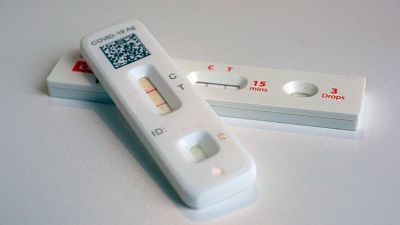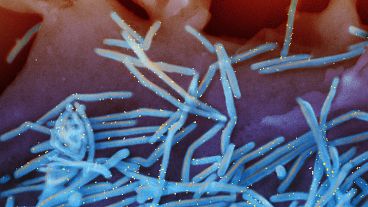The use of molnupiravir to treat at-risk COVID patients coincides with mutations of the virus, scientists say.
An antiviral drug used to treat COVID-19 infections has been linked to coronavirus mutations that are suspected of then being passed on to other people, researchers say.
Scientists mapped COVID-19 mutations over time to see how and when the virus evolved, and they spotted unusual “mutational events” that were associated with patients who had taken the drug molnupiravir.
It was one of the first antivirals to be made available for treatment of COVID-19 during the pandemic, and it works by inducing mutations in the virus’s genome, which essentially prevents the virus from multiplying, reducing the viral load. This then helps the body’s immune system to control the infection.
The World Health Organization (WHO) recommended molnupiravir for treatment of patients with a high risk of hospitalisation in March 2022, making it the first oral antiviral drug on its treatment guide for the infection. https://www.euronews.com/next/2022/03/03/who-recommends-covid-antiviral-pill-for-the-first-time-to-treat-those-at-high-risk
Researchers from the UK’s Francis Crick Institute, the University of Cambridge, Imperial College London, the University of Liverpool, the University of Cape Town, and UK Health Security Agency (UKHSA) looked at global sequencing databases of COVID-19 virus, analysing a “family tree” of 15 million sequences.
This helped them to track the evolutionary history of the virus, pinpointing when mutations occurred. The researchers say that while viruses are mutating all the time, they identified “mutational events” that were different to normal patterns of mutation, and they were “strongly associated with individuals who had taken molnupiravir”.
Publishing their findings in the journal Nature, the researchers said the mutations were found to have increased in 2022, at a time that coincided with the introduction of molnupiravir. They also found the mutations were more likely to be found in older patients, who were more likely to be prescribed the drug as they were deemed more at risk of hospitalisation.
“Molnupiravir is one of a number of drugs being used to fight COVID-19. It belongs to a class of drugs that can cause the virus to mutate so much that it is fatally weakened,” said Christopher Ruis from the Department of Medicine at the University of Cambridge.
“But what we’ve found is that in some patients, this process doesn’t kill all the viruses, and some mutated viruses can spread. This is important to take into account when assessing the overall benefits and risks of molnupiravir and similar drugs”.
The researchers found at least 30 per cent of the “mutation events” in England involved the use of molnupiravir. They saw small clusters of mutations which suggested other patients were infected with the mutated virus. No current variants of concern are currently linked to this signature though, they added.
“COVID-19 is still having a major effect on human health, and some people have difficulty clearing the virus, so it’s important we develop drugs which aim to cut short the length of infection,” said Theo Sanderson, lead author and postdoctoral researcher at the Francis Crick Institute.
“But our evidence shows that a specific antiviral drug, molnupiravir, also results in new mutations, increasing the genetic diversity in the surviving viral population.”
He said the findings are useful for the ongoing assessment of molnupiravir, and that new drug development should take into account the possibility of mutations being caused by antivirals.
“Our work shows that the unprecedented size of post-pandemic sequence datasets, collaboratively built by thousands of researchers and healthcare workers around the world, creates huge power to reveal insights into virus evolution that would not be possible from analysis of data from any individual country,” he added.



